Power Pitch
Pearls of Wisdom: Uncovering Diagnostic & Prognostic Gems with AI
ISMRM & ISMRT Annual Meeting & Exhibition • 10-15 May 2025 • Honolulu, Hawai'i

| 13:45 |
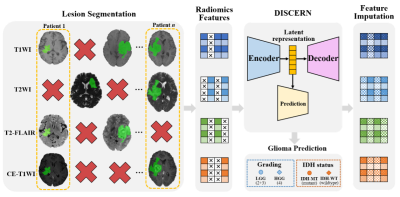 |
Screen Number: 26
0220. Leveraging
the Untapped Potentials of Incomplete MRI Sequences for Glioma
Grading and IDH Mutation Status Prediction
F. Liang, J. Yan, J. Lin, R. Wei, Y. Xu, X. Zhen, R. Yang
The Second Affiliated Hospital, School of Medicine, South China University of Technology, Guangzhou, China
Impact: The DISCERN model demonstrates significant
potentials for real-world clinical applications in
noninvasive glioma grading and IDH mutation status
prediction with incomplete mp-MRI data, offering a robust
tool for clinical decision-making and personalized treatment
planning.
|
| 13:47 |
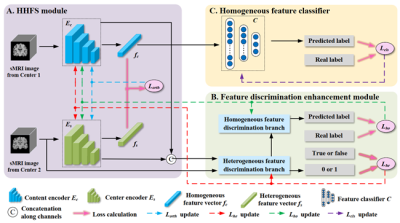 |
Screen Number: 27
0221. HomoNet:
Enhancing Multi-Center Alzheimer's Disease Classification via
Disentangling Homogeneous Features in Structural MRI
L. Gao, C. Lin, Y. Dong, J. Zhang, J. Wang
Ningbo University, Ningbo, China
Impact: HomoNet enhances multi-center sMRI image
classification, improving diagnostic accuracy for AD and
MCI. It effectively addresses data heterogeneity, increases
model generalizability, and provides a scalable,
re-training-free solution, making it highly applicable for
real-world clinical imaging.
|
| 13:49 |
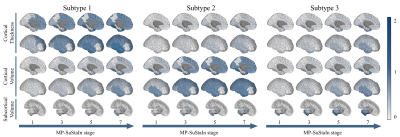 |
Screen Number: 28
0222. Multi-Parametric
Subtype and Stage Inference improves spatiotemporal subtyping of
Alzheimer's Disease

Y. Huang, H. Xu, Y. Chen, S. Li, Y. Shen, Y. Shen, Z.
Cao, Z. Zhao, M. Li, D. Wu
Zhejiang University, Hangzhou Shi, China
Impact: We identified three subtypes of Alzheimer's
disease with distinct progression patterns and morphological
characteristics by using multiple brain morphologic
biomarkers and a modified Subtype and Stage Inference model,
which can analyze the spatiotemporal heterogeneity of
neurodegenerative diseases.
|
| 13:51 |
 |
Screen Number: 29
0223. MLC-GCN:
Multi-Level Connectomes Based GCN for AD Detection
Y. Fu, X. Zeng, J. Zhang, J. Detre, Z. Wang
Univerisity of Maryland, Baltimore, United States
Impact: The MLC-GCN classifier significantly enhances
Alzheimer’s disease detection by exploiting multi-level
connectomes. The clinically meaningful classifier features
suggest a potential of localizing disease-related nodes or
regions, facilitating clinical diagnosis and future targeted
interventions.
|
| 13:53 |
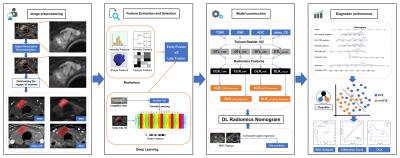 |
Screen Number: 30
0224. Deep
Learning Radiomics Model Based on Multiparametric MRI to Predict
Extrathyroidal Extension in Papillary Thyroid Carcinoma
X. Li, Y. Song, H. Wang, L. Tang, X. Xie, A. Mao, Q. Chen,
B. Song
Fudan University Minhang Hospital, Shanghai, China
Impact: This is the first DL radiomics model based on
multiparametric MRI for prediction of ETE in PTC, and it
could be used as a complement to ultrasound evaluation in
clinical practice for PTC patients.
|
| 13:55 |
Screen Number: 31
0225. WITHDRAWN |
|
| 13:57 |
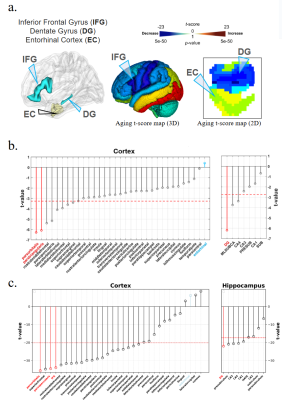 |
Screen Number: 32
0226. Identifying
Brain Regions Vulnerable and Resistant to Aging Using AI-Derived
Cerebral Blood Volume from T1-Weighted MRI
Z. Li, Y. Zhang, A. Cao, S. Small, J. Guo
Columbia University, New York, United States
Impact: This non-invasive AICBV mapping technique offers
an efficient alternative to traditional CBV fMRI scans,
enabling large-scale and longitudinal studies of brain
aging. It allows early detection of high-risk regions and
guides targeted interventions to preserve cognitive health
and resilience.
|
| 13:59 |
Screen Number: 33
0227. WITHDRAWN |
|
| 14:01 |
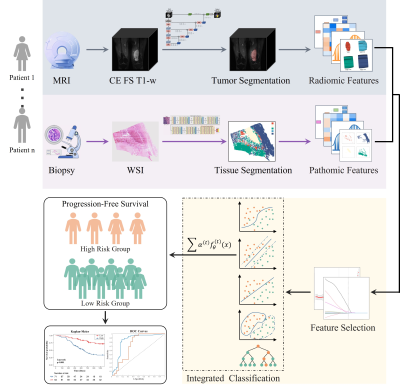 |
Screen Number: 34
0228. Radiopathological
System for Quantifying the Tumor Microenvironment and Predicting
Prognosis in Osteosarcoma: A Multicenter Study
X. Zhang, X. Chen, R. She, S. Li, Q. Feng, Y. Zhao
School of Biomedical Engineering, Southern Medical University, Guangzhou, China
Impact: This model provides a comprehensive prognostic
assessment, essential for advancing predictive tools and
extensive validation before clinical application.
|
| 14:03 |
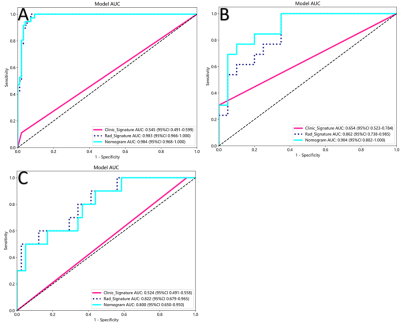 |
Screen Number: 35
0229. Predicting
Microsatellite Instability in Endometrial Cancer by Multi-modal
MRI-based Radiomics Combined with Clinical Risk Factors
Q-y Wei, Y. Li, X. Huang, C. Yang, H. Qin, J-y Liao
Department of Radiology, The First Affiliated Hospital of Guangxi Medical University, Nanning, Guangxi, China
Impact:
These machine learning models can perform non-invasive MSI status assessment for patients who are not suitable for surgery, help clinical better assess patient prognosis, evaluate the feasibility of immunotherapy in advanced patients, and provide clinical decision support. |
| 14:05 |
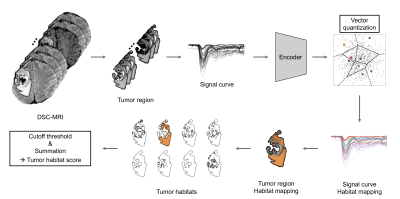 |
Screen Number: 36
0230. Improving
prognostic stratification in adult-type diffuse glioma using
unsupervised spatiotemporal perfusion-based tumor habitat
analysis
J. Lee, J. Jang, I. Hwang, S. H. Choi, K. S. Choi
Seoul National University College of Medicine, Seoul, Korea, Republic of
Impact: The Tumor Habitat Score represents an imaging
biomarker that allows clinicians to stratify diffuse glioma
patients more accurately based on survival risk. This
facilitates personalized treatment decisions, potentially
improving outcomes by identifying patients who might benefit
most from targeted therapies.
|
| 14:07 |
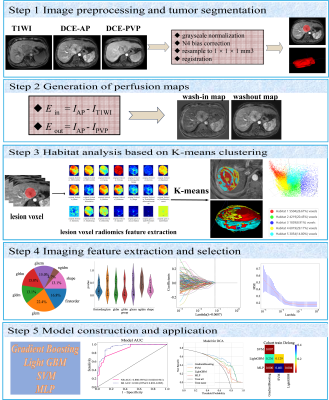 |
Screen Number: 37
0231. Predicting
Microvascular Invasion and Recurrence-Free Survival in
Hepatocellular Carcinoma Using DCE-MRI Habitat Analysis and Deep
Learning
F. JIA, X. ZHAO, Y. JIANG, J. JIANG, Z. WANG, Y. XIONG, J.
ZHANG
The Second Hospital & Clinical Medical School, Lanzhou University, LANZHOU, China
Impact:
The fusion model's high accuracy in predicting MVI and RFS can significantly enhance preoperative planning for HCC patients, guiding personalized treatment strategies and improving prognosis. This approach opens new avenues for non-invasive cancer diagnostics and risk stratification. |
| 14:09 |
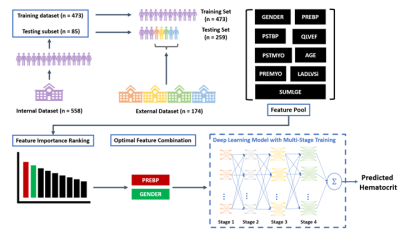 |
Screen Number: 38
0232. Quantification
of Extracellular Volume Fraction in Cardiac MRI without Blood
Sampling Using Multi-Stage Training Deep Learning
Z. Li, K. Youssef, M. Amian, D. Yalcinkaya, V. Polsani, M.
Elliott, R. Dharmakumar, R. Judd, D. Shah, O. Simonetti, M.
Tong, B. Sharif
Purdue University, Indianapolis, United States
Impact: This study shows that incorporating additional
features in a DL model enhances HCT prediction from CMR
data, eliminating the need for blood sampling. This
advancement could streamline ECV measurement, making it more
accessible for diagnosing myocardial diseases in clinical
settings.
|
| 14:11 |
 |
Screen Number: 39
0233. Machine
Learning Predicts Hemorrhagic Transformation after Stroke Using
Diffusion and Perfusion Weighted MR Imaging
J. Wang, Y. Guo, S. Xu, Y. Luo
Shanghai Fourth People's Hospital, Shanghai, China
Impact:
Practical model effectively predicts HT outcome using only three key features with high efficiency. Refined model, enhanced with domain knowledge, achieves higher accuracy and more reliable predictions, which makes it a valuable approach in decision making especially under complicated situations. |
| 14:13 |
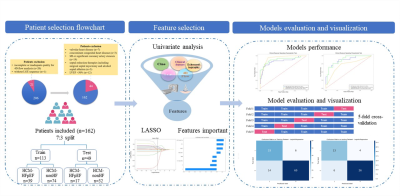 |
Screen Number: 40
0234. The
value of machine learning approach based on echocardiography and
CMR for diagnosing hypertrophic cardiomyopathy with HFpEF
M. Hu, J. Wang, W. Zhu, C. Yang, Y. Leng, P. Yang, J. Dai,
L. Gong
the Second Affiliated Hospital of Nanchang University, Nanchang, China
Impact: HCM patients with HFpEF demonstrated a markedly
reduced survival rate compared to non-HFpEF. Our results
suggested machine learning approaches based on
echocardiography and CMR can be used to identify HFpEF which
would be beneficial for the management of HCM patients.
|
| 14:15 |
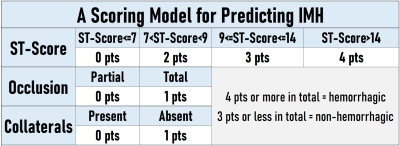 |
Screen Number: 41
0235. Explainable
AI Enables Early Prediction of Intramyocardial Hemorrhage Risk
in Acute Myocardial Infarction (MI) Patients
K. Youssef, K. Vora, R. Gupta, R. Dharmakumar
Indiana University School of Medicine, Indianapolis, United States
Impact: By providing an accurate and interpretable
method to predict hMI risk before reperfusion, this
explainable-AI-based tool empowers clinicians to make
informed, real-time decisions, potentially reducing
complications and improving outcomes in patients
mechanically revascularized for MI.
|
| 14:17 |
 |
Screen Number: 42
0236. Multi-modal
Adaptive Fusion Model for Breast Cancer Molecular Subtype
Prediction Using Mammography and MRI
M. He, H. Chen, Y. Zheng, T. Tan, M. Ma
Shengli Clinical College of Fujian Medical University & Department of Radiology, Fujian Provincial Hospital, Fuzhou University Affiliated Provincial Hospital, Fuzhou 350001, China
Impact: By uniquely combining 2D mammography and 3D MRI
data, the multimodal deep learning model captures
complementary tumor characteristics, supporting more
accurate and nuanced classification across multiple
subtypes, potentially aiding in treatment planning and
improving patient outcomes.
|
| 14:19 |
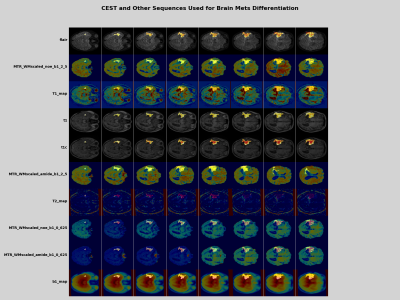 |
Screen Number: 43
0237. CEST
Radiomics for Accurate Differentiation of True Tumour
Progression from Treatment Effects in Brain Metastases Using
Machine Learning
D. Young, W. Lam, R. Chan, D. Sussman, P. Maralani, A.
Sahgal, H. Soliman, G. Stanisz
Toronto Metropolitan University, Toronto, Canada; Institute for Biomedical Engineering, Science and Technology (iBEST) at Toronto Metropolitan University, Toronto, Canada
Impact: These findings suggest that AI-driven analysis
of combined CEST and MRI features could serve as an
effective diagnostic tool in clinical practice, potentially
improving patient management without the need for further
invasive procedures.
|
| 14:21 |
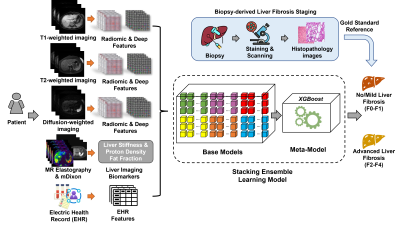 |
Screen Number: 44
0238. Ensemble
Learning Stratification of Liver Histologic Fibrosis using
Multi-Modal MRI and EHR Data in Pediatric and Adult Patients
H. Li, Z. Lu, S. Reeder, D. Harris, W. Masch, A. Aslam, K.
Shanbhogue, A. Bernieh, S. Ranganathan, J. Dillman, L. He
Cincinnati Children's Hospital Medical Center, Cincinnati, United States
Impact: Our study demonstrated that an ensemble learning
model had a moderate performance in stratifying liver
fibrosis using clinical multi-modal MRI and EHR data. With
further tuning, it provides a potential non-invasive means
for monitoring and screening of liver fibrosis.
|
| 14:23 |
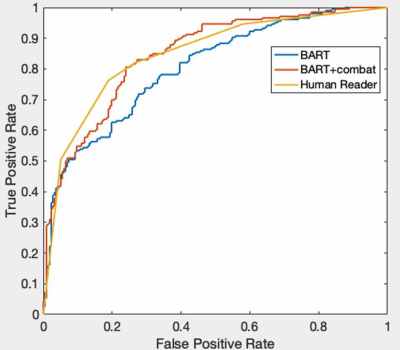 |
Screen Number: 45
0239. A
BART machine learning model to classify lipomatous tumors in MR
images
F. Godinez, N. Yuan, Y. Abdelhafez, A. Roy, H. Nalbant, C.
Bateni, J. Qi, M. Zhang, S. Lee, A. Moawad, M. Guindani, L.
Nardo
University of California Davis, Sacramento, United States
Impact: This method can assist radiologists in screening
for ALT in regions with low incidence rates. By using
machine learning less biopsies’ will be needed. We would
like to implement this model in other detection tasks such
as brain tumor classification.
|
| 14:25 |
 |
Screen Number: 46
0240. An
Interpretable and Generalizable Deep Learning Model for
Non-Invasive Assessment of MVI in HCC Based on Preoperative MRI:
A Multi-Center Study
X. Dong, J. Zhang, C. Ma, H. Yang, W. Zhang, X. Jia, D.
Yang, Z. Yang
Department of Radiology, Beijing Friendship Hospital, Capital Medical University, Yongan Road 95, West District, Beijing, 100050, China, Beijing, China
Impact: Incorporating adversarial networks into the
model development process may enhance the generalizability
of the MVI prediction model, facilitating its practical
implementation.
|
| 14:27 |
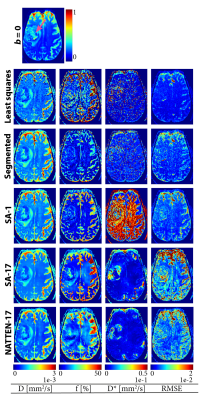 |
Screen Number: 47
0241. IVIM
parameter estimation in brain tumors: Transformer-based deep
learning shows potential for improved classification accuracy

M. Kaandorp, A. Jakab, C. Federau, P. While
University Children’s Hospital Zurich, Zurich, Switzerland
Impact: This study shows that transformer-based model
fitting offers clinically valuable IVIM parameter estimates
and potential for enhanced tumor classification accuracy.
This advancement improves the noninvasive assessment of
tumor heterogeneity, bringing IVIM closer to clinical use
and supporting personalized treatment strategies.
|
| 14:29 |
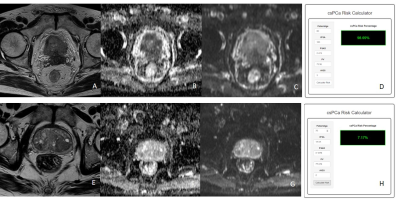 |
Screen Number: 48
0242. Development
of a Risk Calculator for Clinically Significant Prostate Cancer
Using Biparametric MRI Deep Learning and Clinical Parameters
L. Li, T. Peng, S. Lyu, M. Li, F. Shi, Y. Liu
Affiliated Hospital of Chengdu University, Chengdu, China
Impact: The developed risk calculator offers valuable
insights for personalized treatment strategies and enhances
prognosis evaluation in clinical practice. Its utilization
can lead to more targeted biopsies, reducing unnecessary
procedures and improving patient care.
|
| 14:31 |
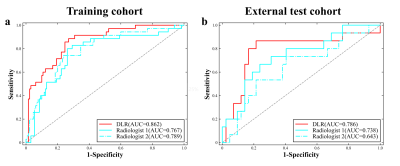 |
Screen Number: 49
0243. Enhanced
accuracy and stability in automated intra-pancreatic fat
deposition monitoring of type 2 diabetes mellitus using Dixon
MRI and deep learning
Y. Chen, Z. Pan, Q. Chen, H. Lin, B. Huang, W. Huang, F.
Meng, Z. Zhong, W. Liu, Z. Li, H. Qin
Shenzhen Traditional Chinese Medicine Hospital (The Fourth Clinical Medical College of Guangzhou University of Chinese Medicine), Shenzhen, China
Impact: The DLR model demonstrated superior performance
over radiologists, providing a more efficient, accurate and
stable method for monitoring IPFD.
|
| 14:33 |
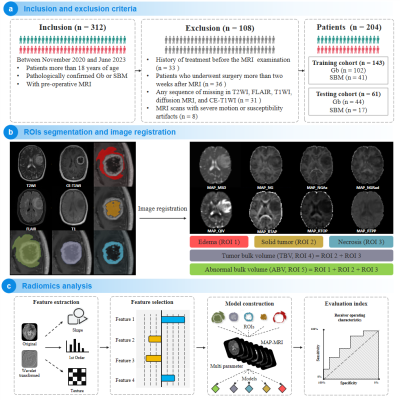 |
Screen Number: 50
0244. Habitat
analysis based on mean apparent propagator-MRI for
differentiating between glioblastoma and solitary brain
metastasis
G. Zhao, M. He, X. Ma, E. Gao, Y. Gao, X. Liu, J. Bai, M.
Wang, Y. Zhang, J. Cheng
The First Affiliated Hospital of Zhengzhou University, Zhengzhou, China
Impact: Morphological MRI often struggles to
differentiate between glioblastoma (Gb) and solitary brain
metastasis (SBM). This study seeks to identify differences
between these two types of tumors through advanced diffusion
imaging, with the aim of contributing to clinical practice.
|
The International Society for Magnetic Resonance in Medicine is accredited by the Accreditation Council for Continuing Medical Education to provide continuing medical education for physicians.